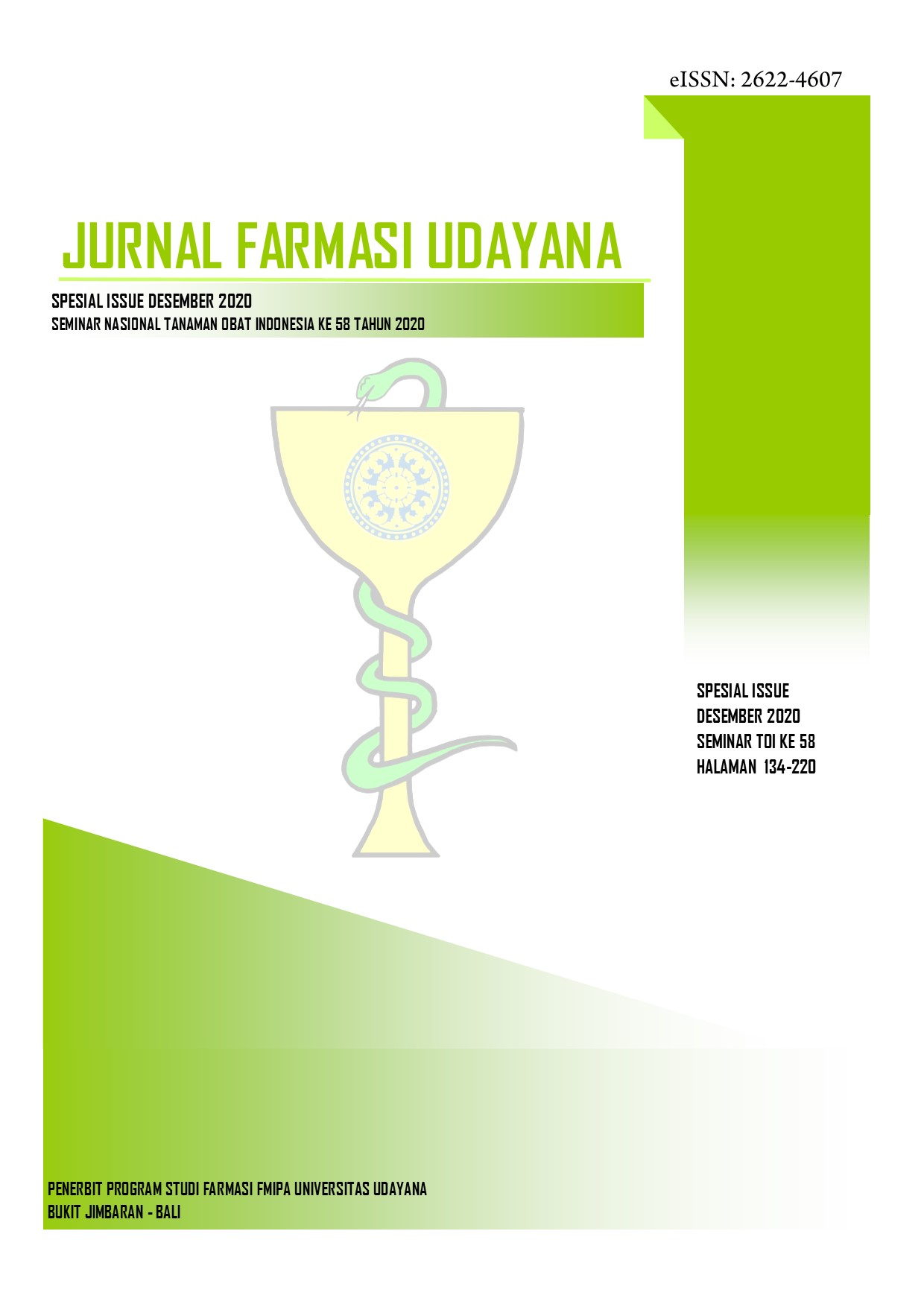Potensi Minyak Atsiri Kamfer Sumatera (Dryobalanops aromatica Gaertn.) Untuk Bahan Baku Obat Herbal
Abstract
Camphor resin has been harvested since the seventh century from west coast of Sumatra, Indonesia. This historic oil or crystal have been collected from sumatran camphor trees (Dryobalanops aromatica) and utilized as fragrance, antibiotic, topical treatment for pains, and aromatherapy. The paper describes the local wisdom of camphor essential oil, phytochemical content, and potential utilization for herbal medicine. Conventionally, camphor crystals are harvested through felling and log splitting. This method produces about 1.5–2.5 kg of crystals. Extraction of camphor is also possible by making notches in standing tree trunk, as well as collecting liquid resin that exudate from wounded resin channel. The leaves biomass contains significant essential oils, especially fresh-young leaves. This volatile compound is distilled at 0.46–0.73% yield. The essential oil compounds include a-pinene, b-caryophyllene, 1.8-cineole, limonene, and p-cymene. For aromatherapy application, camphor oil has a relaxing fragrance offer relief to congested respiratory system thereby boosts immune system. In topical uses, it relieves inflammation, insect bites, itching, irritation, rashes, and muscular aches and pains. Local wisdom revealed camphor oil for digestive problems treatment, bloating, relieve muscle and joint pain intensity. The compound 1.8 cineole has potential as antiviral, expectorant, and prospective for respiratory and blood vessels treatment.
Downloads
References
Aswandi, A., & Kholibrina, C. R. (2020). The grading classification for Styrax sumatrana resins based on physico chemical characteristics using two-step cluster analysis. IOP Conference Series: Materials Science and Engineering, 935, 012013. https://doi.org/10.1088/1757-899X/935/1/012013
Azhari, I. (2016). Perihal Kapur Barus dan Kemenyan dalam Sumber danTulisan Sejarah. In I. Azhari & A. Aswandi (Eds.), Jejak Kapur Barus dan Kemenyan Sumatera Utara dalam Peradaban Dunia. Pusat Studi Sejarah UNIMED.
Bhatia, S. P., Letizia, C. S., & Api, A. M. (2008). Fragrance material review on borneol. Food and Chemical Toxicology, 46(11). https://doi.org/10.1016/j.fct.2008.06.031
Biro Pusat Statistik. (2020). Produksi Kayu Bulat oleh Perusahaan Hak Pengusahaan Hutan Menurut Jenis Kayu, 2004 - 2018. Biro Pusat Statistik. https://www.bps.go.id/indicator/60/1723/1/produksi-kayu-bulat-perusahaan-hak-pengusahaan-hutan-hph-menurut-pulau.html
Butler, R. A. (2020). Berapa Banyak Hutan Dunia yang Telah Menghilang dalam Satu Dekade ini? https://www.mongabay.co.id/2020/06/13/berapa-banyak-hutan-dunia-yang-telah-menghilang-dalam-satu-dekade-ini/
Dharmananda, S. (2003). Dryobalanops for medicine. Institute for Traditional Medicine.
Duke, S. (2015). Plants containing Borneol. In Phytochemical and Ethnobotanical Databases.
EMR. (2020). Global Borneol Market Outlook. https://www.expertmarketresearch.com/reports/borneol-market
Gusmailina, G. (2015, April 1). Borneol potensi minyak atsiri masa depan. https://doi.org/10.13057/psnmbi/m010215
Heyne, K. (1987). Tumbuhan Berguna Indonesia (III). Yayasan Sarana Wana Jaya.
Huo, G. Z. (1995). Bing pian’s anti-inflammation and analgesia effects on laser burn wounds. China Journal of Farmacy, 30(9), 532–534.
IUCN. (2020). The IUCN Red List of Threatened Species. https://www.iucnredlist.org/
Kholibrina, C R, & Aswandi, A. (2020). The consumer preferences for new styrax based perfume products using a conjoint analysis approach. IOP Conference Series: Materials Science and Engineering, 935, 012016. https://doi.org/10.1088/1757-899X/935/1/012016
Kholibrina, C. R., Aswandi, A., & Saputra, M. H. (2015). Peningkatan Produktivitas Hasil Hutan Bukan Kayu Jenis: Jernang (Daemonorops spp), Kapur (Dryobalanops aromatica) dan Cendana Aceh (Santalum album) Melalui Pengembangan Bibit Unggul dan Teknik Silvikultur.
Mank, V., & Polonska, T. (2016). Use of natural oils as bioactive ingredients of cosmetic products. Ukrainian Food Journal, 5(2). https://doi.org/10.24263/2304-974X-2016-5-2-7
Pasaribu, G., Gusmailina, G., & Komarayati, S. (2014). Pemanfaatan minyak Dryobalanops aromatica sebagai bahan pewangi alamI. Jurnal Penelitian Hasil Hutan, 32(3). https://doi.org/10.20886/jphh.2014.32.3.235-242
Rajeswara, R. B. R. (2016). Hydrosols and water-soluble essential oils of aromatic plants: Future economic products. Indian Perfumer, 56, 29–33.
Sharif, A., Nawaz, H., Rafia, R., Ayesha, M., & Rashid, U. (2016). A review on bioactive potential of Benzoin resin. International Journal of Chemical and Biochemical Sciences, 10, 106–110.
Yamada, T., & Suzuki, E. (2004). Ecological role of vegetative sprouting in the regeneration of Dryobalanops rappa , an emergent species in a Bornean tropical wetland forest. Journal of Tropical Ecology, 20(4). https://doi.org/10.1017/S0266467404001300




